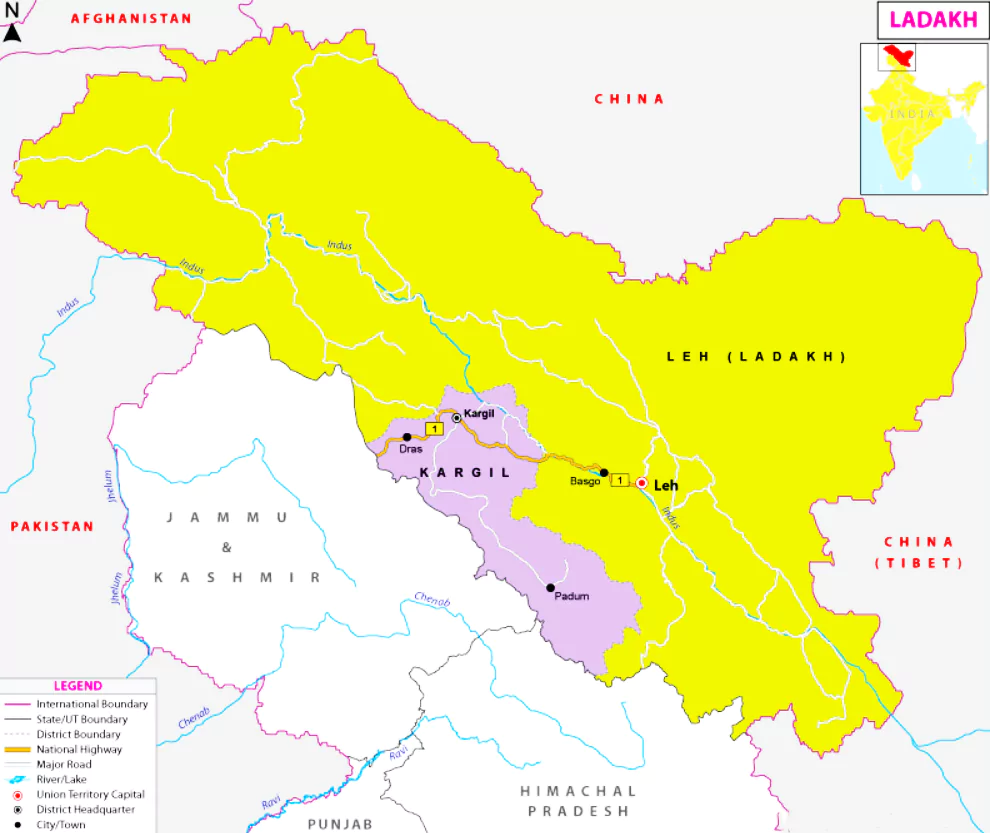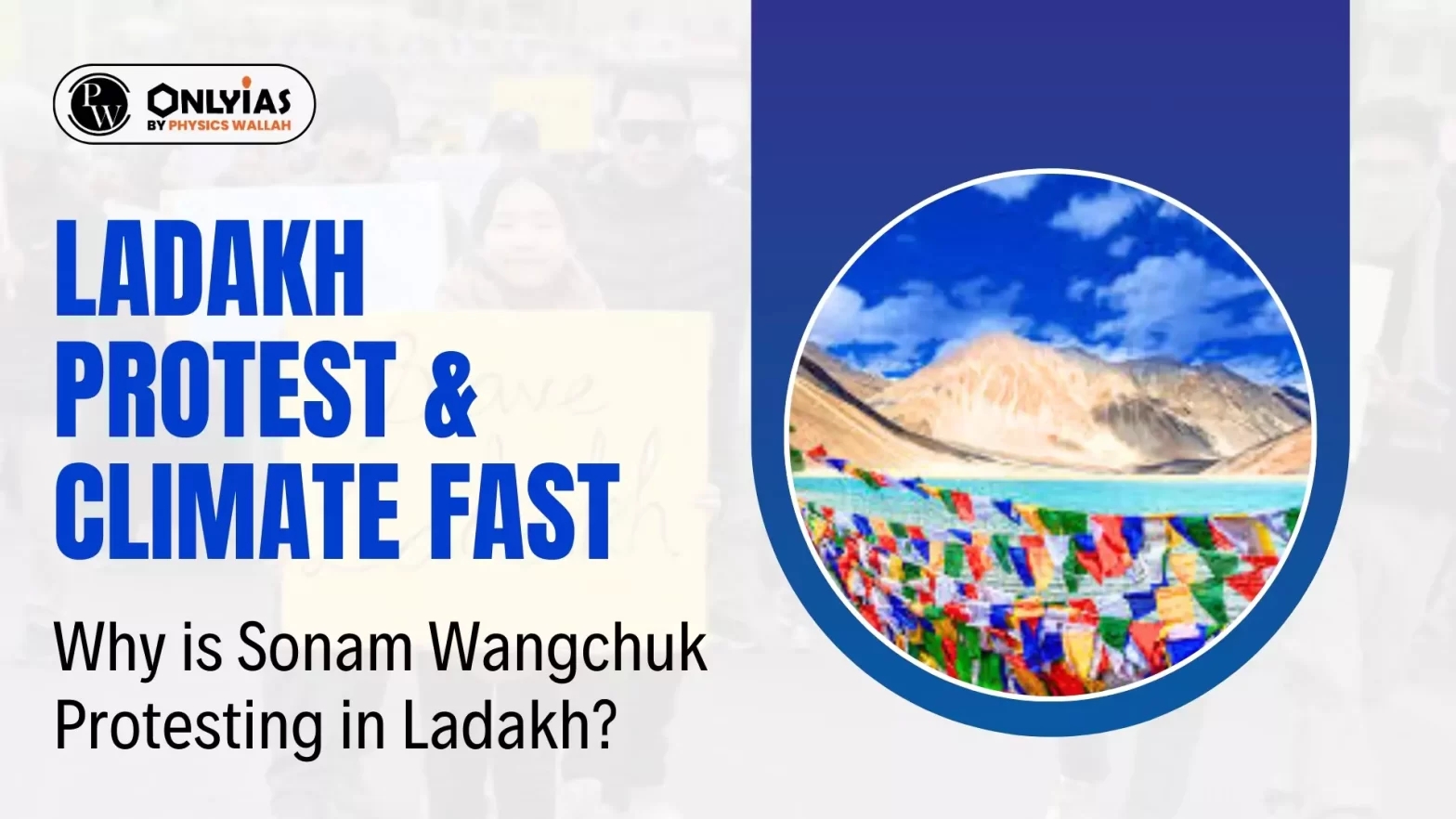Context
Recently, Sonam Wangchuk began a 21-day hunger strike in Leh, Ladakh, to advocate for Ladakh’s statehood and inclusion on the Sixth Schedule.
Chronology: Ladakh’s Complicated History

- Namgyal Dynasty: Ladakh was once ruled by its own dynasty.
- Loss of Independence: In 1834, it fell under Dogra rule, lasting a century.
- Part of India: Post-1947, Ladakh joined India within Jammu & Kashmir.
Ladakh Protest: Demands For Autonomy
- Cultural Differences: Ladakh sought separation from Kashmir due to distinct cultural identity.
- Unmet Requests: The central government did not grant autonomy.
- Neglect and Discrimination:
- 1951-55 Budget Allocation: Ladakh Received Zero
- Per Capita Funding: 5-6 Times Less Than J&K
- The Rise of the Union Territory Movement
- Neglect: Ladakhis felt ignored and sought UT status.
- District Division: Ladakh was split into Leh and Kargil in 1979
- Religious Politics: Division seen as political strategy.
- Partial Fulfillment of Demands
- Scheduled Tribe Area: In 1989, Ladakh gained reservations.
- Local Councils: In 1995. Autonomous councils were formed.
- Limited Powers: These councils had restricted authority.
- The Creation of Ladakh as a Union Territory
- Continued Demands: Ladakhis persisted for UT status.
- Article 370 Revoked: In 2019, Ladakh became a separate UT.
- Reactions to UT Status
- Celebrations in Leh: Buddhists in Leh celebrated the change.
- Protests in Kargil: Muslims in Kargil protested the decision.
Concerns and Demands After UT Status
- Loss of Protections: Article 370 and 35A‘s removal worried Ladakhis.
- Outsider Influence: Fears of unchecked development and cultural dilution arose.
- Limited Governance: Lack of local governance control became a concern.
Ladakh Protest: Why is Sonam Wangchuk Protesting in Ladakh?
-
The Unified Protest
- Unity Formed: Leh Apex Body and Kargil Democratic Alliance united.
- Key Demands: Demands included Sixth Schedule inclusion and statehood.
-
The Protests and Hunger Strikes
- Protests in Winter: Protests persisted despite harsh winters.
- Hunger Strikes: Sonam Wangchuk’s hunger strikes drew attention.
-
The Government’s Stance
- Security Concerns: Focus on military infrastructure.
- Economic Priorities: Facilitating corporate investments.
- Setting a Precedent: Reluctance due to potential similar demands.
-
The Core Issue of Trust and Development
-
- Trust Deficit: Ladakhis fear loss of control over their destiny.
- Development Concerns: They seek development that respects their heritage.
Conclusion
The hunger strike in Ladakh emphasises the importance of addressing the region’s governance and environmental difficulties and sustainable development solutions are critical for ensuring long term peace and prosperity in the region.
Also Read: Constitutional Governance Of Scheduled Areas
| Prelims PYQ (2023):
With reference to ‘Scheduled Areas’ in India, consider the following statements:
1. Within a State, the notification of an area as Scheduled Area takes place through an Order of the President.
2. The largest administrative unit forming the Scheduled Area is the District and the lowest is the cluster of villages in the Block.
3. The Chief Ministers of the concerned States are required to submit annual reports to the Union Home Ministry on the administration of Scheduled Areas in the States.
How many of the above statements are correct?
(a) Only one
(b) Only two
(c) All three
(d) None
Ans: (b) |
![]() 3 Apr 2024
3 Apr 2024


